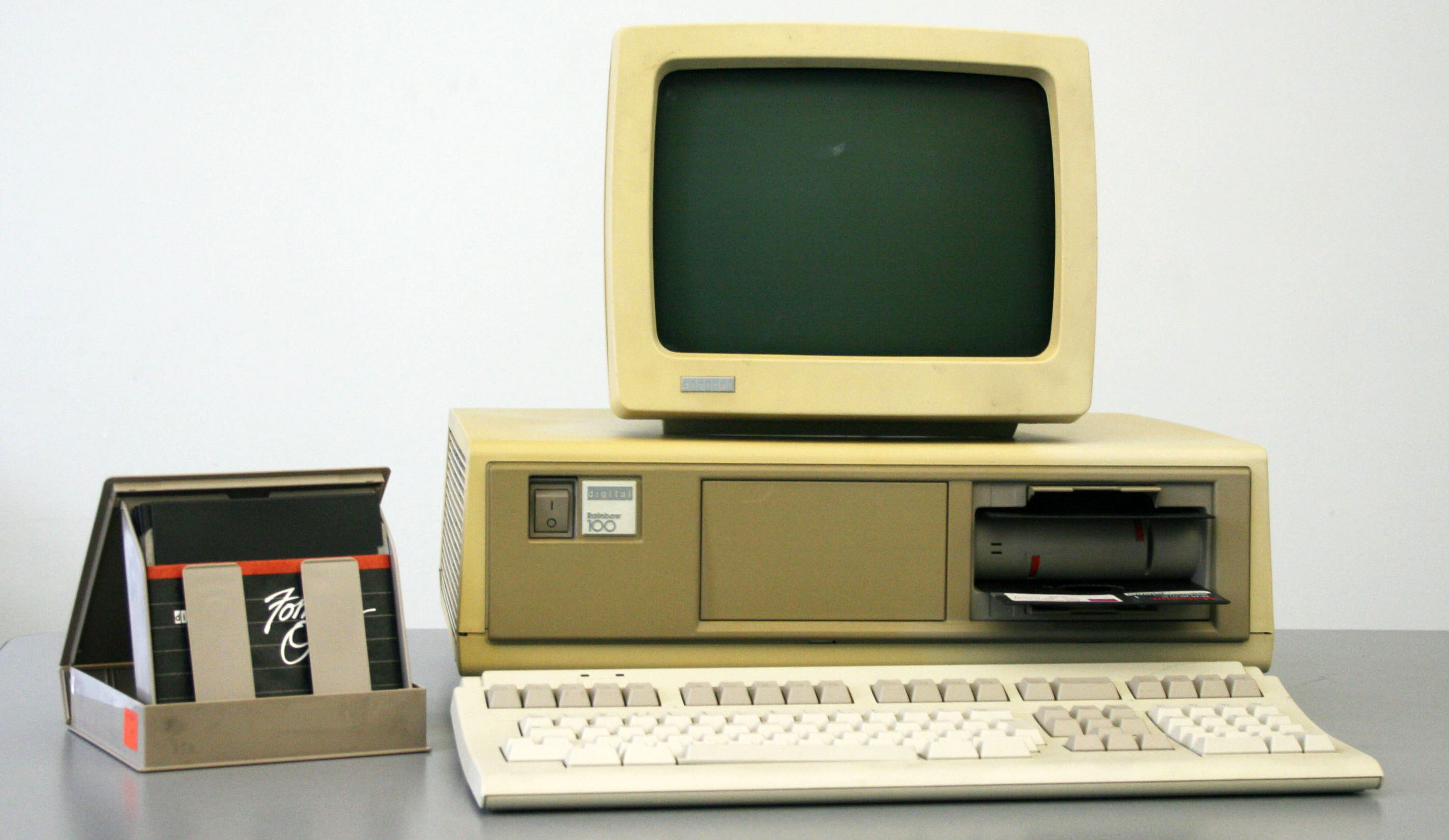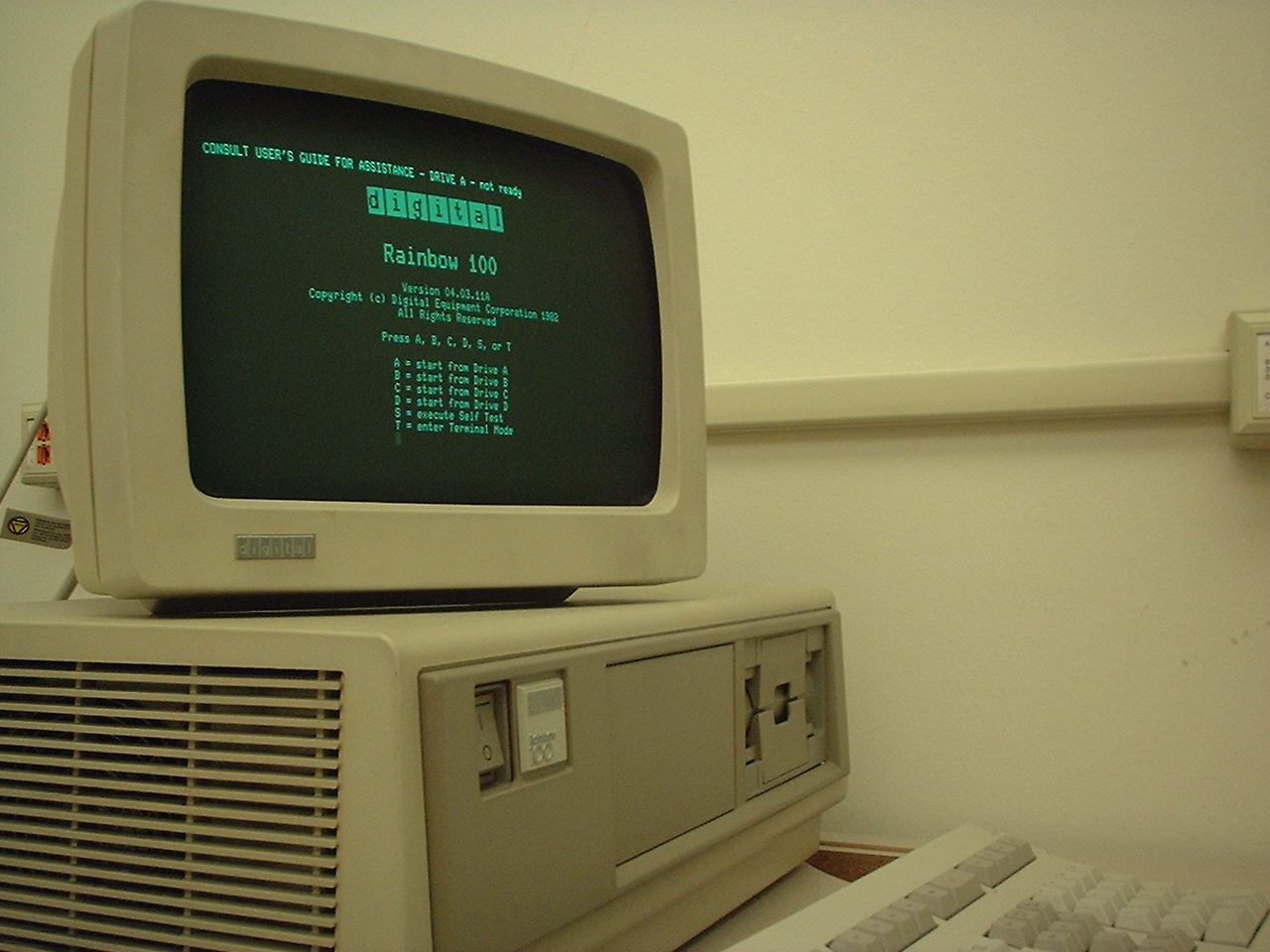The DEC Rainbow 100

In the early 1980s, the Rainbow was a major contendor in the struggle for the 16-bit PC market, and it had a lot of advantages over the IBM PC:
- It had a Z80 copressor for handling i/o and running 8-bit operating systems.
- It had three operating systems: MS-DOS, CP/M-86 (16-bit), and CP/M-80 (8-bit), which could be selected by menu at boot time.
- The boot menu also included a Terminal selection, allowing the Rainbow to act as a VT220 terminal without booting any operating system. Thus even if all the disks broke it still had its uses.
- It had one of the best power supplies ever made, still prized and sought after today.
On the other hand:
- The RX50 variable-speed variable-density diskettes were weird and totally incompatible with any other MS-DOS PC. Plus you had to remember the top one faced down and the bottom one faced up.
- The screen was accessed as if it was a VT220, controlled with escape sequences embedded in the character stream. This was a radically different (although perhaps more sensible) approach from the IBM method, in which character cells and attributes were poked directly into video memory. (The Rainbow monitor was not actually a VT220 terminal with embedded VT220 firmware; it was a just a video monitor, with VT220 "emulation" done by the computer; thanks to Robert Clary for pointing this out in 2018.) The interesting thing about having a PC that worked like a terminal was that, conceivably, it would have been possible to "dial in" to it from outside and conduct remote session, something that was next to impossible with the IBM PC and its clones, but I don't know if this was ever done.

The photo at left taken was in 2001 with a very early low-res digital camera. This mint-condition Rainbow 100 was in the Kermit production area in the Penthouse of Watson Lab, serving as the system console to a VAXstation just below (not visible) whose monitor had died; the VMS 5.5-2 console log is barely visible on the screen. Peeking out from behind the left side of the keyboard is the VAX's external TK50 tape cartridge drive.
In December 2004 - Feb 2005, Carl Bowman of Bridgewater University commented:
The Rainbow drives were not "totally incompatible" with any other MSDOS PC" as you state. They could actually read and write to disks that had been formatted on an IBM PC using a single-sided parameter in the format command. This may seem trivial, but it wasn't to DEC Rainbow users, because it allowed them to transfer data back and forth between Rainbows and IBM PC's using the RX50 drives.Both the Rainbow monochrome and color monitors had an excellent high resolution graphics mode. I'm not sure why you say that there were "no graphics and no color" when in fact there were both.
Other notables:
The hi-res graphics were standard, but you had to have programs written expressly for the Rainbow to access them. Thus a fair number of MS-DOS programs would not go into graphics mode on the Rainbow. Programs like Multiplan, Lotus 123, etc. that had custom-Rainbow versions, on the other hand, did nice high-res charts on the Rainbow. I have a full set of manuals and even a software guide for the Rainbow that clearly document this. As a matter of fact, I have an early version of MS Windows running on my Rainbow without ever having added a graphics card.
- The Rainbow could directly address 896 k of RAM, while the IBM PC and all other MS.DOS machines of that era could directly address only 640 k RAM.
- The RX-50 drives wrote to single-sided quad density disks, which was something of an accomplishment at that time. This method enabled the Rainbow to store 400k on a single sided floppy, while an IBM PC could store only 396 on a double sided floppy.
